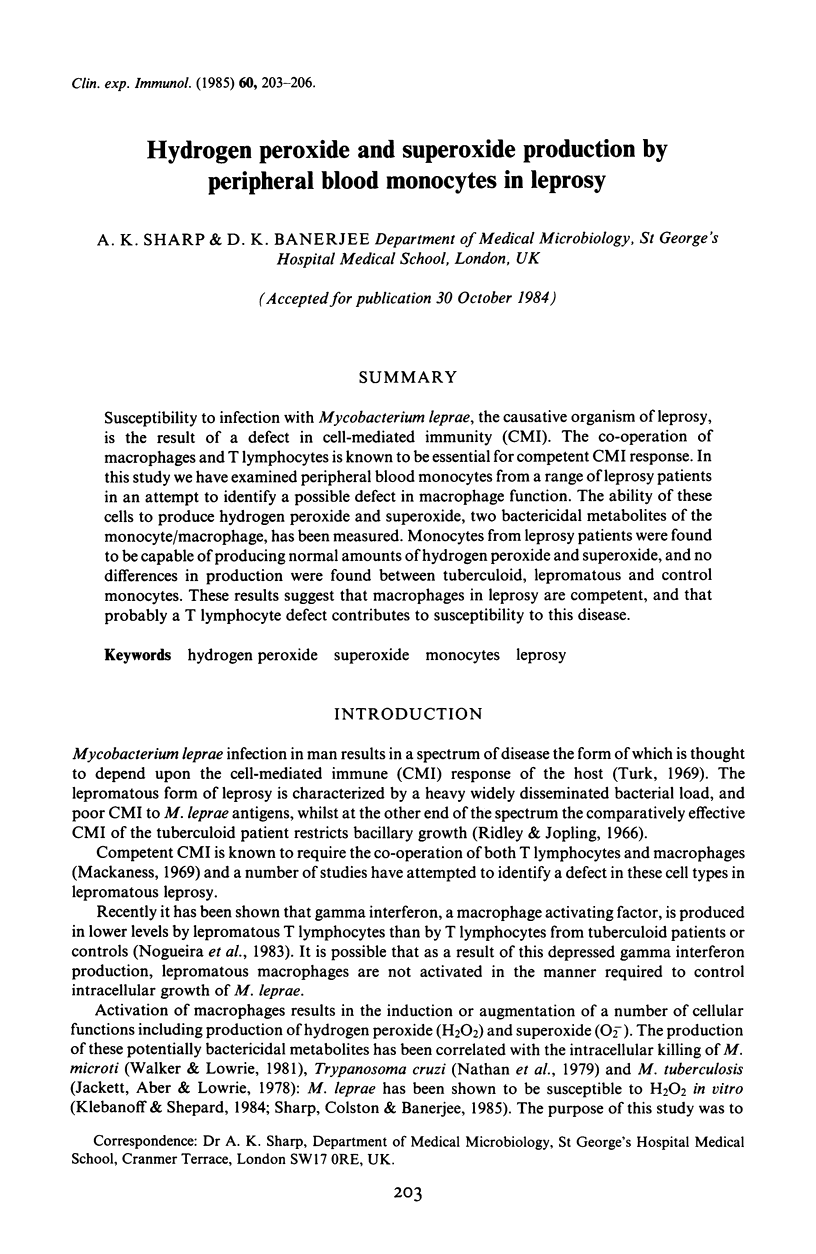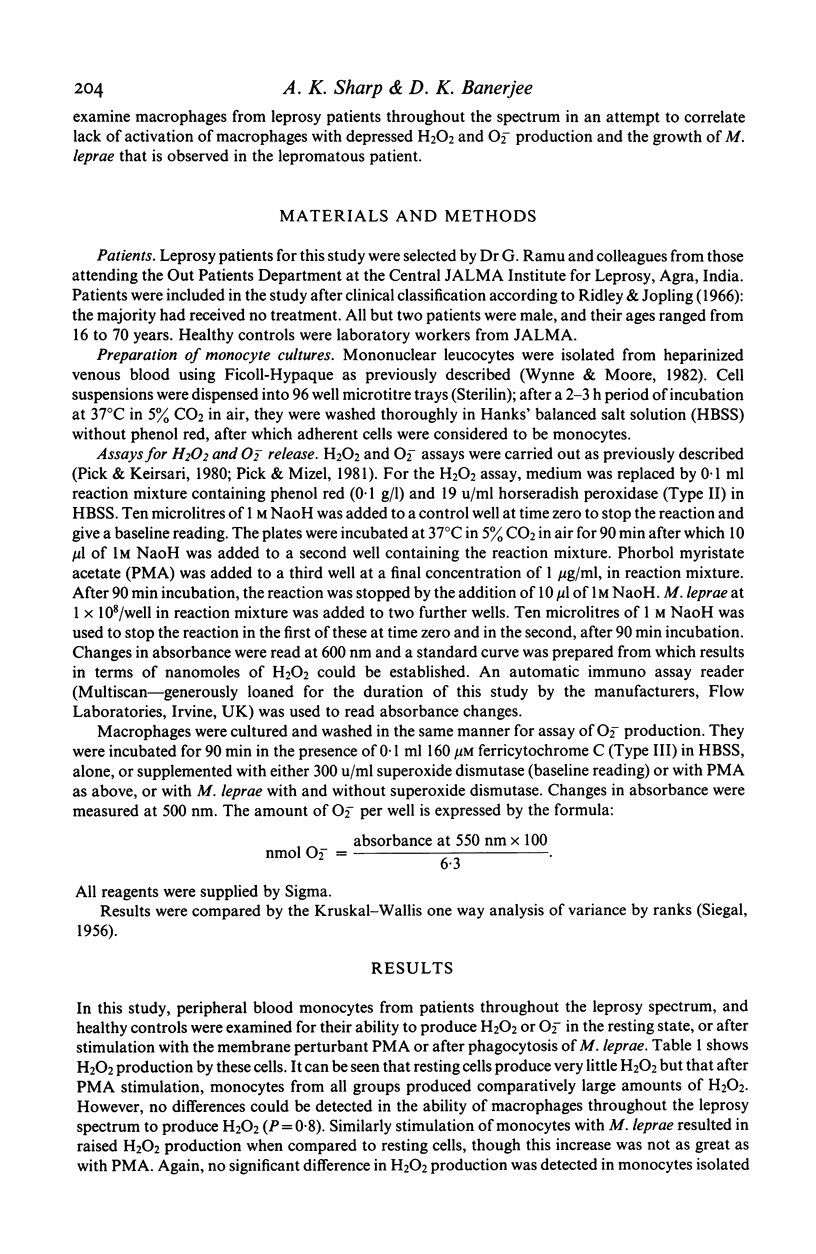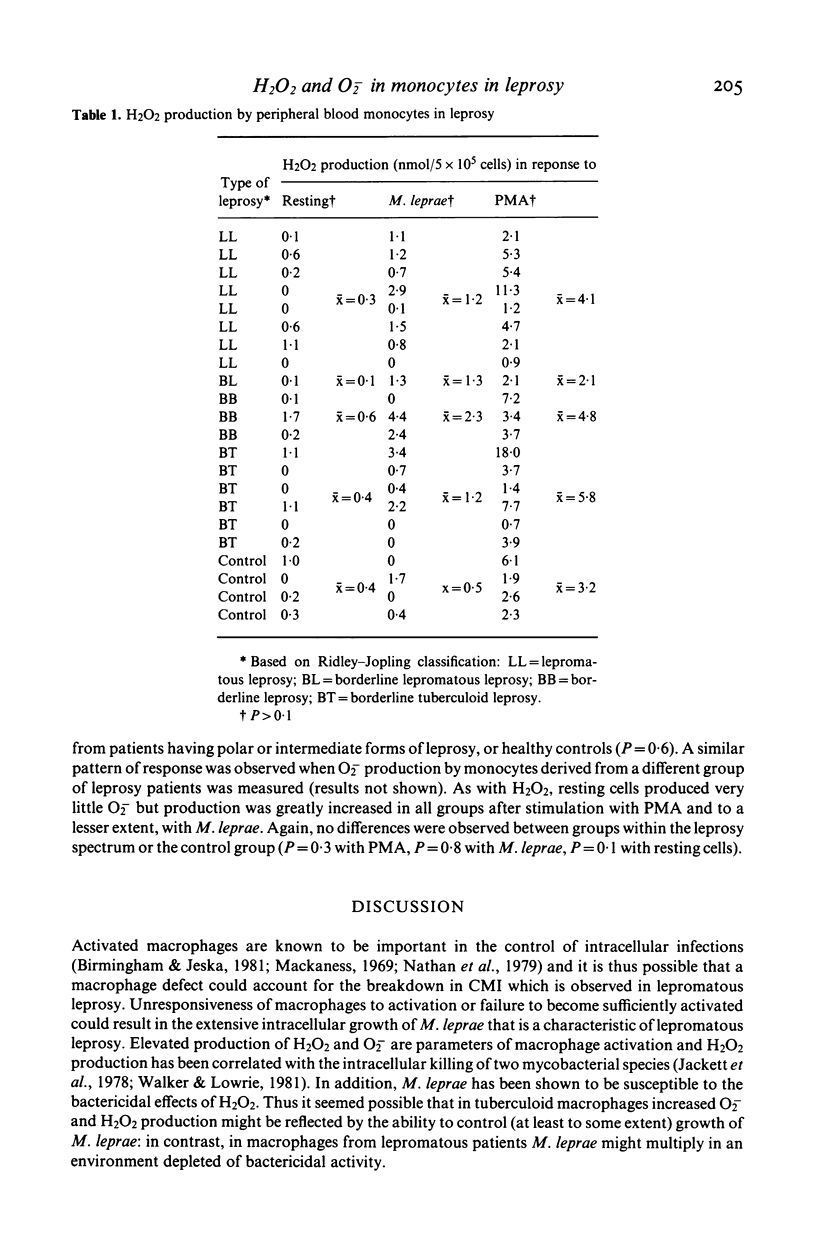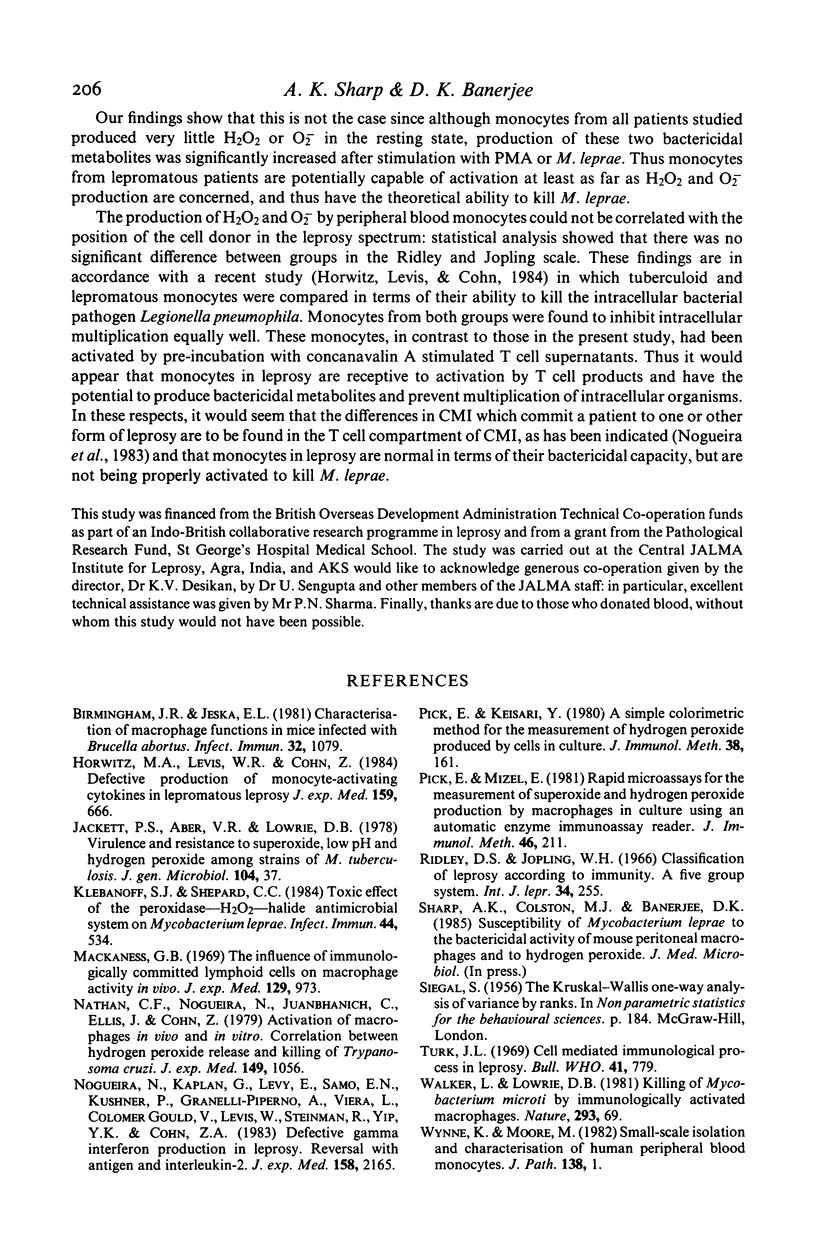Abstract
Susceptibility to infection with Mycobacterium leprae, the causative organism of leprosy, is the result of a defect in cell-mediated immunity (CMI). The co-operation of macrophages and T lymphocytes is known to be essential for competent CMI response. In this study we have examined peripheral blood monocytes from a range of leprosy patients in an attempt to identify a possible defect in macrophage function. The ability of these cells to produce hydrogen peroxide and superoxide, two bactericidal metabolites of the monocyte/macrophage, has been measured. Monocytes from leprosy patients were found to be capable of producing normal amounts of hydrogen peroxide and superoxide, and no differences in production were found between tuberculoid, lepromatous and control monocytes. These results suggest that macrophages in leprosy are competent, and that probably a T lymphocyte defect contributes to susceptibility to this disease.
Full text
PDF



Selected References
These references are in PubMed. This may not be the complete list of references from this article.
- Birmingham J. R., Jeska E. L. Characterization of macrophage functions in mice infected with Brucella abortus. Infect Immun. 1981 Jun;32(3):1079–1083. doi: 10.1128/iai.32.3.1079-1083.1981. [DOI] [PMC free article] [PubMed] [Google Scholar]
- Horwitz M. A., Levis W. R., Cohn Z. A. Defective production of monocyte-activating cytokines in lepromatous leprosy. J Exp Med. 1984 Mar 1;159(3):666–678. doi: 10.1084/jem.159.3.666. [DOI] [PMC free article] [PubMed] [Google Scholar]
- Jackett P. S., Aber V. R., Lowrie D. B. Virulence and resistance to superoxide, low pH and hydrogen peroxide among strains of Mycobacterium tuberculosis. J Gen Microbiol. 1978 Jan;104(1):37–45. doi: 10.1099/00221287-104-1-37. [DOI] [PubMed] [Google Scholar]
- Klebanoff S. J., Shepard C. C. Toxic effect of the peroxidase-hydrogen peroxide-halide antimicrobial system on Mycobacterium leprae. Infect Immun. 1984 May;44(2):534–536. doi: 10.1128/iai.44.2.534-536.1984. [DOI] [PMC free article] [PubMed] [Google Scholar]
- Mackaness G. B. The influence of immunologically committed lymphoid cells on macrophage activity in vivo. J Exp Med. 1969 May 1;129(5):973–992. doi: 10.1084/jem.129.5.973. [DOI] [PMC free article] [PubMed] [Google Scholar]
- Nathan C., Nogueira N., Juangbhanich C., Ellis J., Cohn Z. Activation of macrophages in vivo and in vitro. Correlation between hydrogen peroxide release and killing of Trypanosoma cruzi. J Exp Med. 1979 May 1;149(5):1056–1068. doi: 10.1084/jem.149.5.1056. [DOI] [PMC free article] [PubMed] [Google Scholar]
- Nogueira N., Kaplan G., Levy E., Sarno E. N., Kushner P., Granelli-Piperno A., Vieira L., Colomer Gould V., Levis W., Steinman R. Defective gamma interferon production in leprosy. Reversal with antigen and interleukin 2. J Exp Med. 1983 Dec 1;158(6):2165–2170. doi: 10.1084/jem.158.6.2165. [DOI] [PMC free article] [PubMed] [Google Scholar]
- Pick E., Keisari Y. A simple colorimetric method for the measurement of hydrogen peroxide produced by cells in culture. J Immunol Methods. 1980;38(1-2):161–170. doi: 10.1016/0022-1759(80)90340-3. [DOI] [PubMed] [Google Scholar]
- Ridley D. S., Jopling W. H. Classification of leprosy according to immunity. A five-group system. Int J Lepr Other Mycobact Dis. 1966 Jul-Sep;34(3):255–273. [PubMed] [Google Scholar]
- Turk J. L. Cell-mediated immunological processes in leprosy. Bull World Health Organ. 1969;41(6):779–792. doi: 10.5935/0305-7518.19700030. [DOI] [PMC free article] [PubMed] [Google Scholar]
- Walker L., Lowrie D. B. Killing of Mycobacterium microti by immunologically activated macrophages. Nature. 1981 Sep 3;293(5827):69–71. doi: 10.1038/293069a0. [DOI] [PubMed] [Google Scholar]
- Wynne K. M., Moore M. Small-scale isolation and characterisation of human peripheral blood monocytes. J Pathol. 1982 Sep;138(1):1–16. doi: 10.1002/path.1711380102. [DOI] [PubMed] [Google Scholar]


